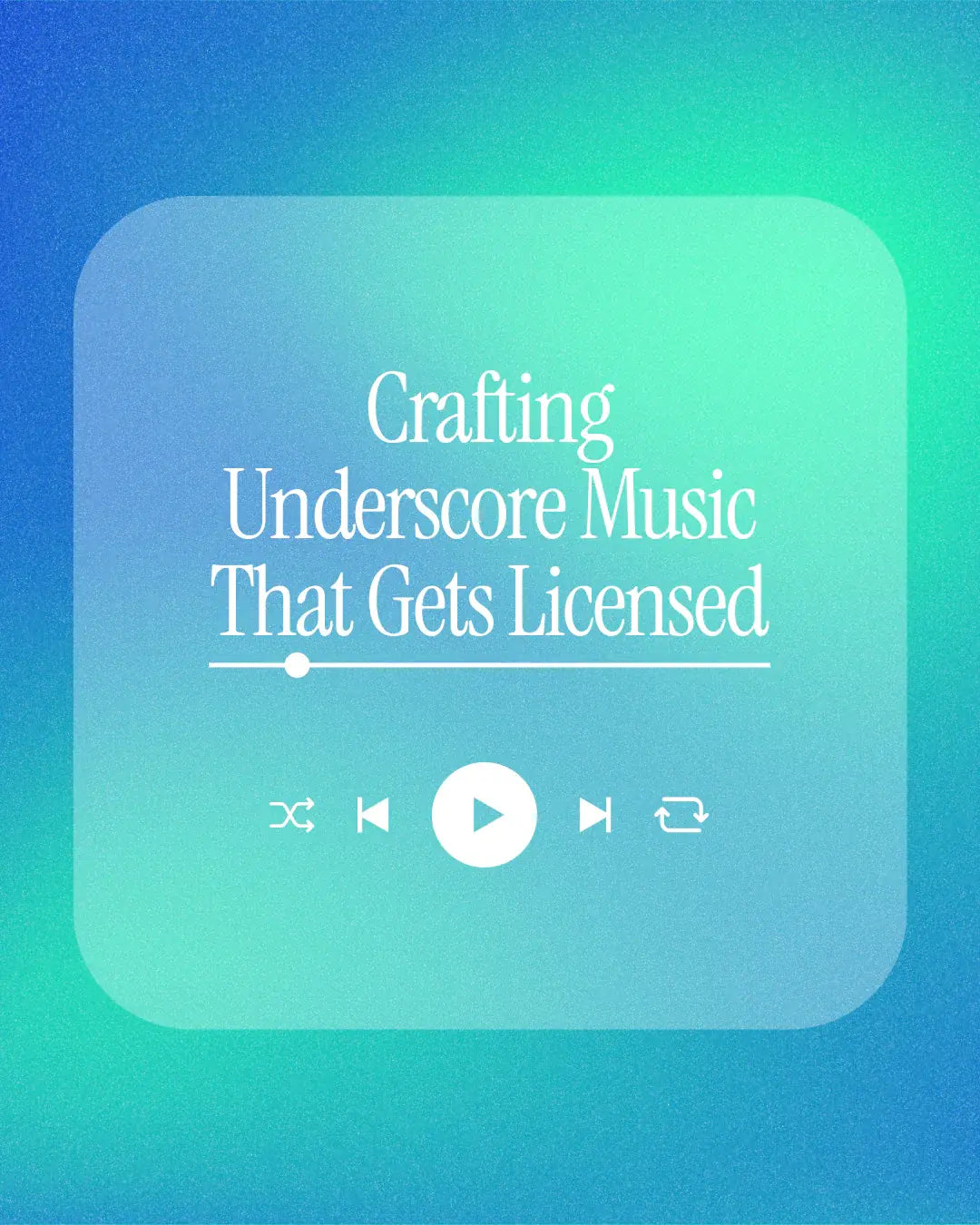
🎬 Crafting Underscore Music That Actually Gets Licensed
Share
In the world of sync licensing, not every track needs to scream for attention. In fact, some of the most in-demand music for film, TV, and branded content is subtle, minimal, and intentionally designed to sit under dialogue or narration.
This is where underscore music comes in—and if done right, it can be your most valuable, most licensed creative asset.
But crafting effective underscore is more than just stripping out the melody. It’s about supporting emotion without distracting from the story. In this post, we’ll walk through how to write underscore music that gets licensed—and keeps getting reused.
🎧 What Is Underscore Music?
Underscore refers to music designed to support a scene without taking focus. Unlike a traditional score or song, it doesn’t compete with voiceover or visuals—it enhances them by subtly shaping mood and pacing.
Think of underscore as the emotional scaffolding beneath a scene.
Used in:
- Dialogue-heavy scenes in TV/film
- Podcasts and audiobooks
- Corporate videos and documentaries
- Reality shows and interviews
- Explainer videos and branded content
🔍 What Makes Great Underscore?
1. Subtlety
Good underscore stays out of the way. No sudden melodic flourishes, attention-grabbing shifts, or prominent vocals. It’s minimal and restrained.
🎯 If the viewer remembers your music more than the dialogue, it failed.
2. Consistency
Editors need cues that maintain a consistent tone across 30–90 seconds. Avoid wild dynamic swings or tempo changes. Underscore is all about steady emotional guidance.
3. Edit-Friendliness
Think in loops and layers. Editors love underscore tracks that can be easily trimmed, extended, or layered. Include:
- Clear loop points
- No abrupt stops
- Seamless transitions
4. Modular Structure
Use repeating motifs, soft pulses, and evolving textures. Build tension or mood without requiring dramatic builds or drops.
5. Emotionally Precise
Just because underscore is minimal doesn’t mean it’s bland. Each cue should evoke a clear emotional direction: hopeful, mysterious, tense, reflective, playful, somber.
✅ “Neutral ambient pad” is useless. “Optimistic slow-building piano underscore” is golden.
🧪 Production Tips for Underscore
🎼 Less is more
Stick to 2–4 instrument layers:
- Pads
- Piano or plucks
- Light percussion
- Atmospheric textures or drones
🎚️ Use space intentionally
Silence, reverb, and decay create emotional weight. Don’t feel pressured to fill every bar with notes.
🔁 Create alternate mixes
Offer variations for editors:
- Percussion only
- No low-end
- Sparse version
- Seamless loopable version
📦 Metadata matters
Use searchable, sync-specific tags:
- Mood: “tense,” “uplifting,” “mysterious”
- Style: “ambient,” “piano-based,” “organic”
- Usage: “documentary underscore,” “light tension,” “emotional background”
🧰 Use Cases: Where Underscore Gets Placed
- True crime docs: low drones, rhythmic pulses
- Lifestyle TV: warm guitar or piano textures
- Corporate explainers: simple, hopeful piano beds
- Nature or travel shows: ambient textures, soft ethnic percussion
- Podcast beds: consistent light instrumental textures
🎧 Pro Tip: Watch TV with captions on and volume low. Study the music that fills the background—you’ll notice underscore doing its job invisibly but effectively.
🎯 Final Thoughts
Crafting underscore is about restraint, emotional clarity, and editorial usability. While it might not get you on a playlist or win a Grammy, it can win you repeat sync placements—especially in high-volume media like reality TV, docs, and branded content.
If you’re serious about sync, your catalog needs underscore. It’s the glue between storytelling and silence—and one of the most in-demand formats in the licensing world today.
Want help building an underscore suite for your catalog or next pitch?
🎛️ Get in touch with Playbutton Media — we help producers package, tag, and license underscore that works.
